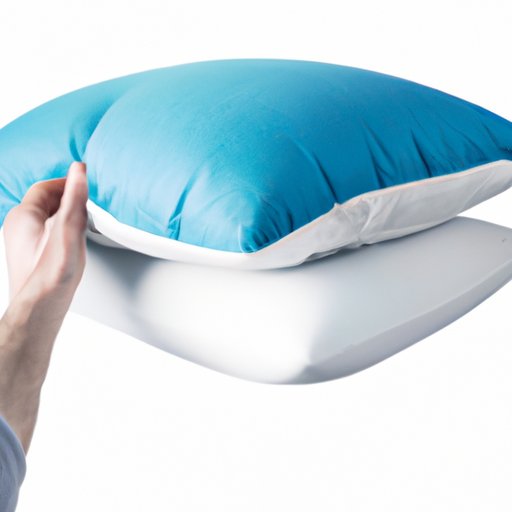
I. Introduction
Have you ever experienced clumpy or lumpy pillows after putting them in the dryer? If so, you’re not alone. Many people struggle to dry their pillows properly, leading to damage and discomfort. This article aims to provide a comprehensive guide to drying pillows in the dryer, including dos and don’ts, tips for saving time and energy, expert opinions, and advice on maximizing the lifespan of your pillows.
II. The Dos and Don’ts of Drying Pillows: A Guide for Proper Pillow Care
Proper pillow care starts with the drying process. Here are some dos and don’ts to keep in mind when drying pillows in the dryer:
Dos:
- Use low heat settings to avoid damage to pillows
- Use dryer balls or clean tennis balls to help fluff pillows
- Check the pillow label for specific drying instructions
Don’ts:
- Do not use high heat settings
- Do not overload the dryer with too many pillows
- Do not dry pillows made of delicate materials, such as silk or down
III. Save Time and Energy: Tips for Drying Pillows in the Dryer
Drying pillows in the dryer can take quite some time, but there are some tips to help speed up the process:
- Use a clean, dry towel or two to help absorb excess moisture and speed up drying time
- Rotate the pillows during the drying cycle to ensure they dry evenly
- Add a few drops of essential oils to freshen up the pillows during the drying process
IV. The Great Pillow Debate: Experts Weigh In on Whether or Not to Put Pillows in the Dryer
There seems to be a debate among experts regarding whether or not it’s okay to put pillows in the dryer. Here are some insights from those in the bedding and textile industries:
Pros of Drying Pillows in the Dryer:
- Dries pillows thoroughly and quickly
- Helps fluff pillows and restore their shape
Cons of Drying Pillows in the Dryer:
- High heat can damage pillows and cause clumping
- May not be suitable for all types of pillows, such as those made from delicate or high-quality materials
It is important to note that different types of pillows may require different drying techniques. For example, memory foam pillows should not be put in the dryer due to their heat sensitivity.
V. From Fluffy to Flat: The Effects of Drying Pillows in the Dryer
The materials and construction of pillows play a significant role in their reaction to heat and drying. Here are some common problems associated with drying pillows in the dryer:
- Pillows may become flat or lumpy if not dried properly
- High heat can damage the filling or outer material of pillows
- Overloading the dryer can prevent pillows from drying evenly
If you find that your pillows have become flattened or lumpy after drying, try putting them in the dryer on a low heat setting with some clean tennis balls or dryer balls to help fluff them back up. If that doesn’t work, it may be time to consider purchasing new pillows.
VI. Maximizing the Lifespan of Your Pillows: Washing and Drying Techniques for Optimal Pillow Maintenance
Proper pillow care doesn’t stop at drying. Here are some tips for washing and drying your pillows to maximize their lifespan:
- Wash your pillows every 6-12 months or as needed
- Use a mild detergent and avoid bleach or fabric softener
- Check the pillow label for specific washing instructions
- Dry pillows thoroughly before use
- Store pillows in a cool, dry place with good ventilation
By taking care of your pillows properly, you can save money in the long run by not having to replace them as frequently.
Conclusion
Proper pillow care is essential for a good night’s sleep and long-lasting pillows. By following the tips and techniques outlined in this article, you can ensure that your pillows are dried properly and maintained for optimal lifespan.




